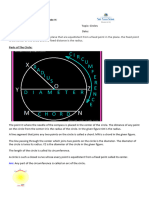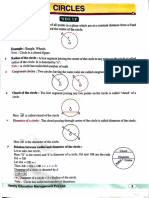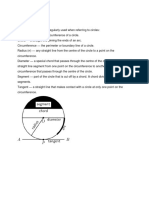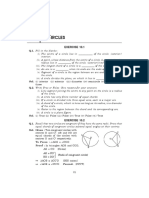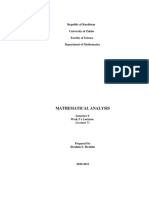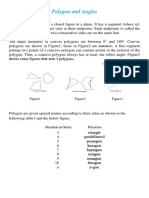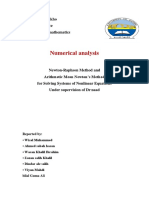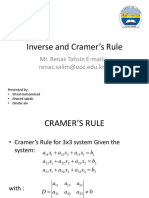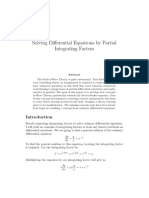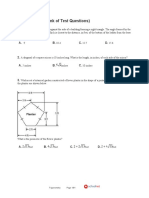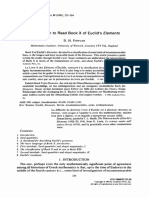0% found this document useful (0 votes)
295 views3 pagesCircle With Special Segment: Definition
A circle is defined as all points equidistant from a given center point. There are three types of segments related to circles: radii, chords, and diameters. A radius connects the center to a point on the circle, a chord connects two points on the circle, and a diameter is a chord that passes through the center. The diameter of a circle is twice the length of the radius. All radii of a given circle are congruent. If two circles have congruent radii and diameters, then the circles are congruent. A radius that is perpendicular to a chord bisects the chord. The perpendicular bisector of a chord passes through the center of the circle.
Uploaded by
Wisal muhammedCopyright
© © All Rights Reserved
We take content rights seriously. If you suspect this is your content, claim it here.
Available Formats
Download as PDF, TXT or read online on Scribd
0% found this document useful (0 votes)
295 views3 pagesCircle With Special Segment: Definition
A circle is defined as all points equidistant from a given center point. There are three types of segments related to circles: radii, chords, and diameters. A radius connects the center to a point on the circle, a chord connects two points on the circle, and a diameter is a chord that passes through the center. The diameter of a circle is twice the length of the radius. All radii of a given circle are congruent. If two circles have congruent radii and diameters, then the circles are congruent. A radius that is perpendicular to a chord bisects the chord. The perpendicular bisector of a chord passes through the center of the circle.
Uploaded by
Wisal muhammedCopyright
© © All Rights Reserved
We take content rights seriously. If you suspect this is your content, claim it here.
Available Formats
Download as PDF, TXT or read online on Scribd
/ 3














